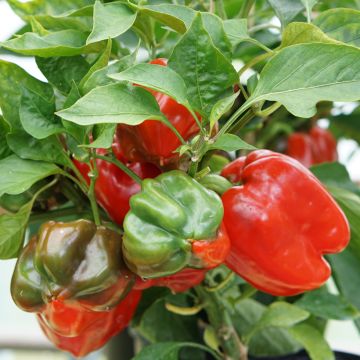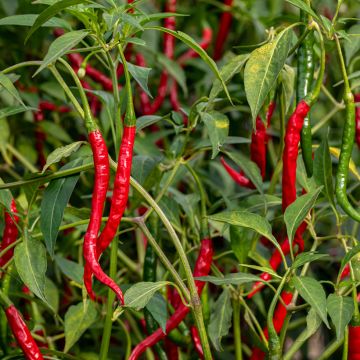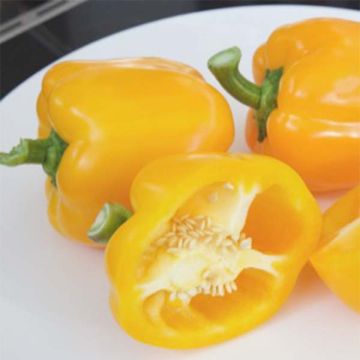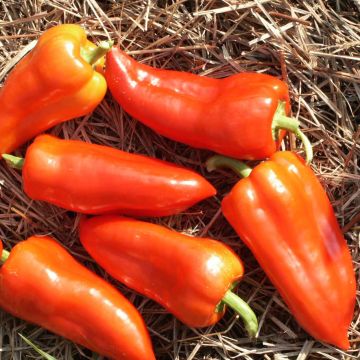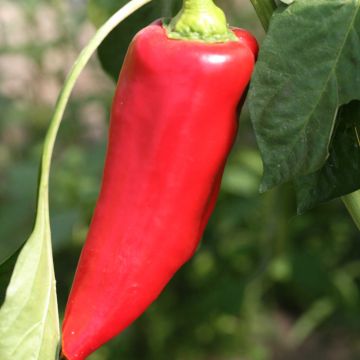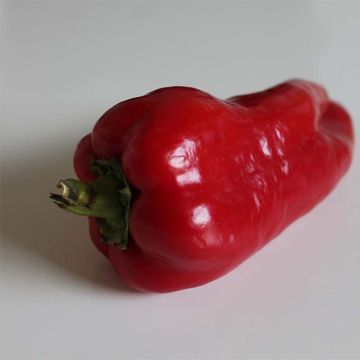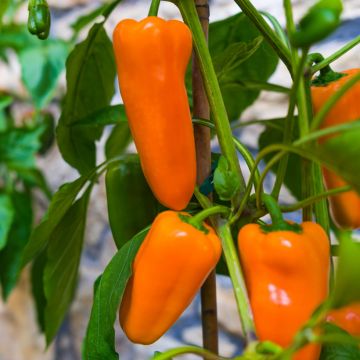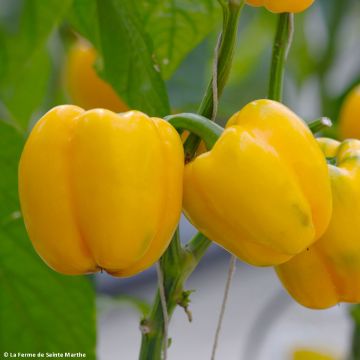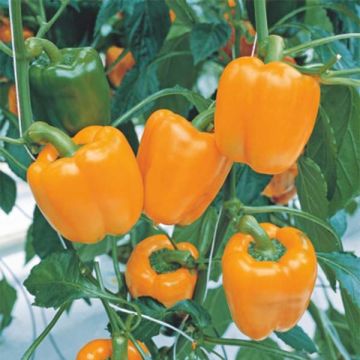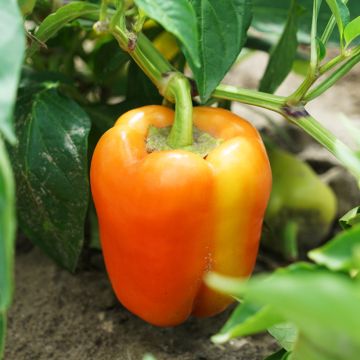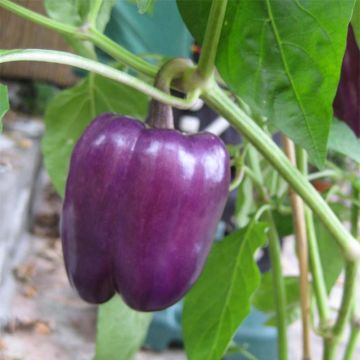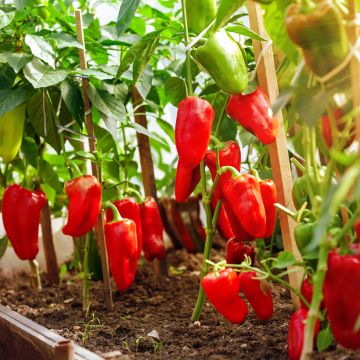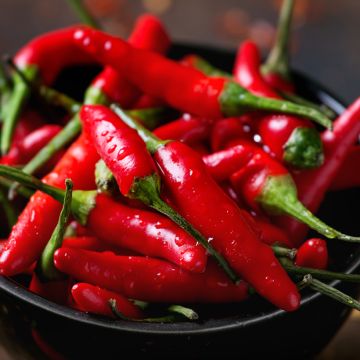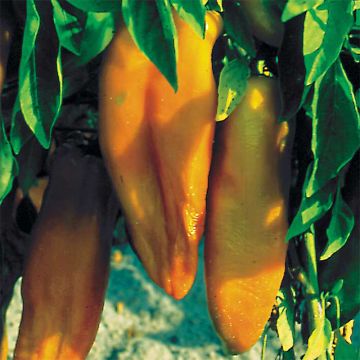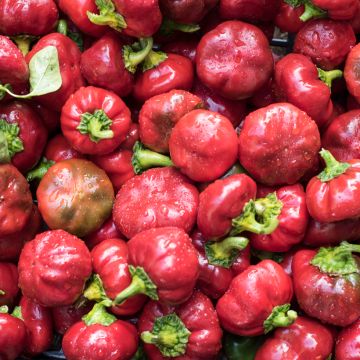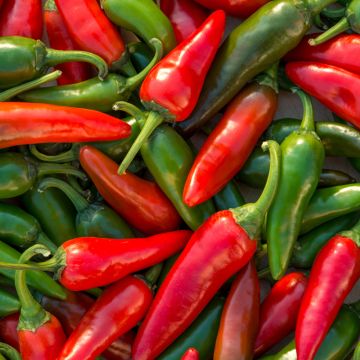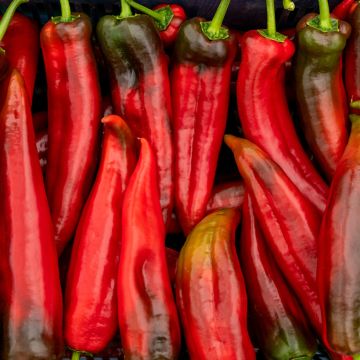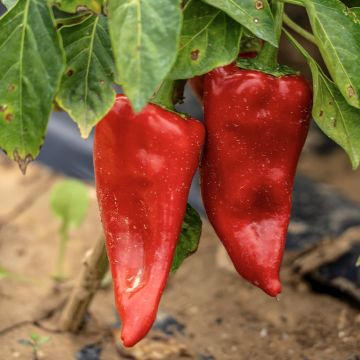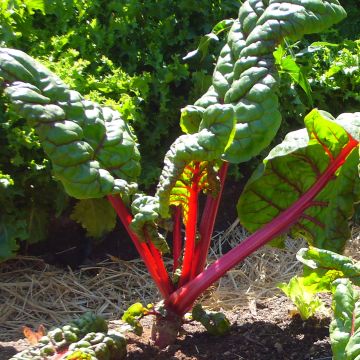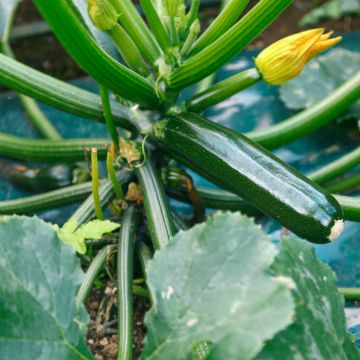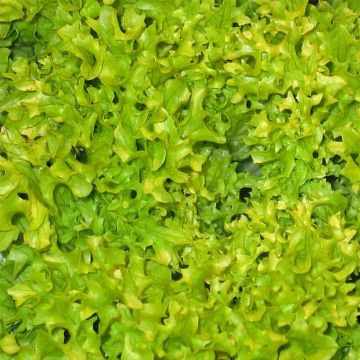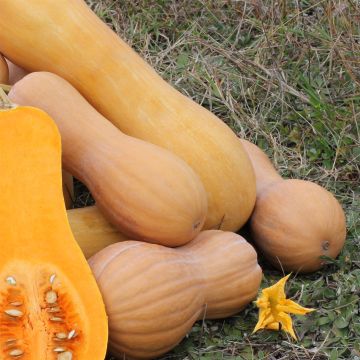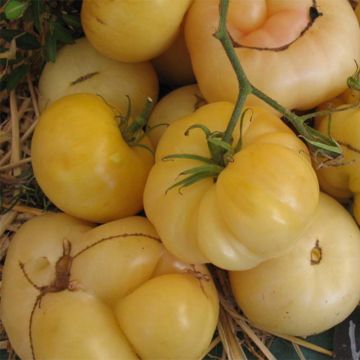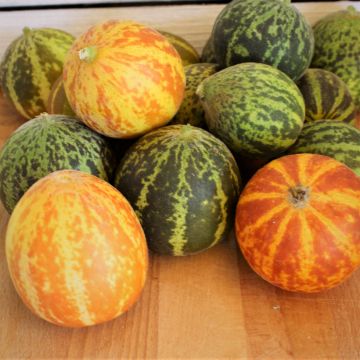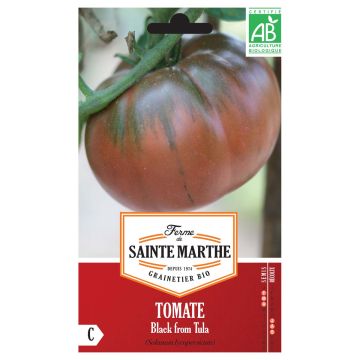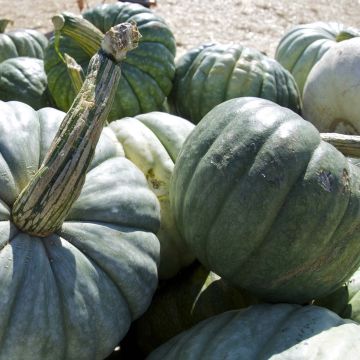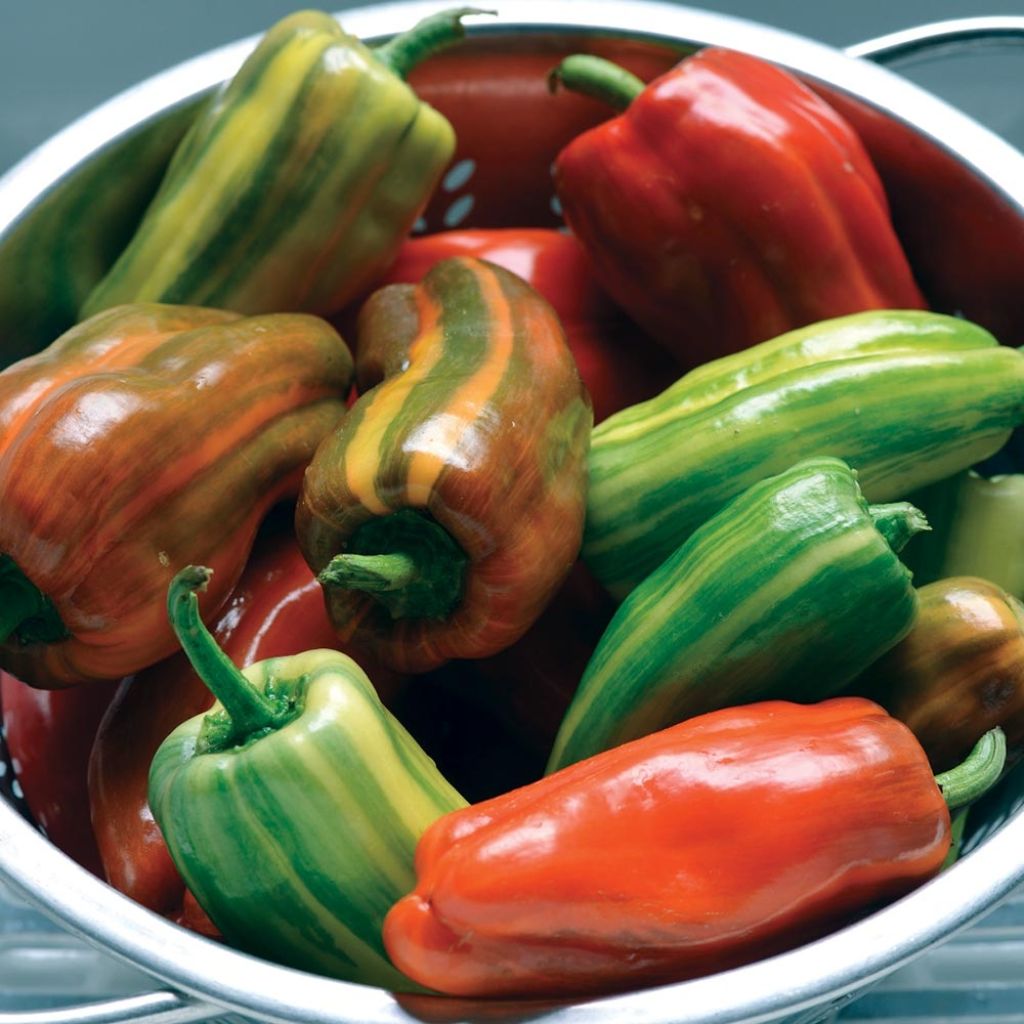

Graines de Poivron Candy Cane F1- Capsicum annuum
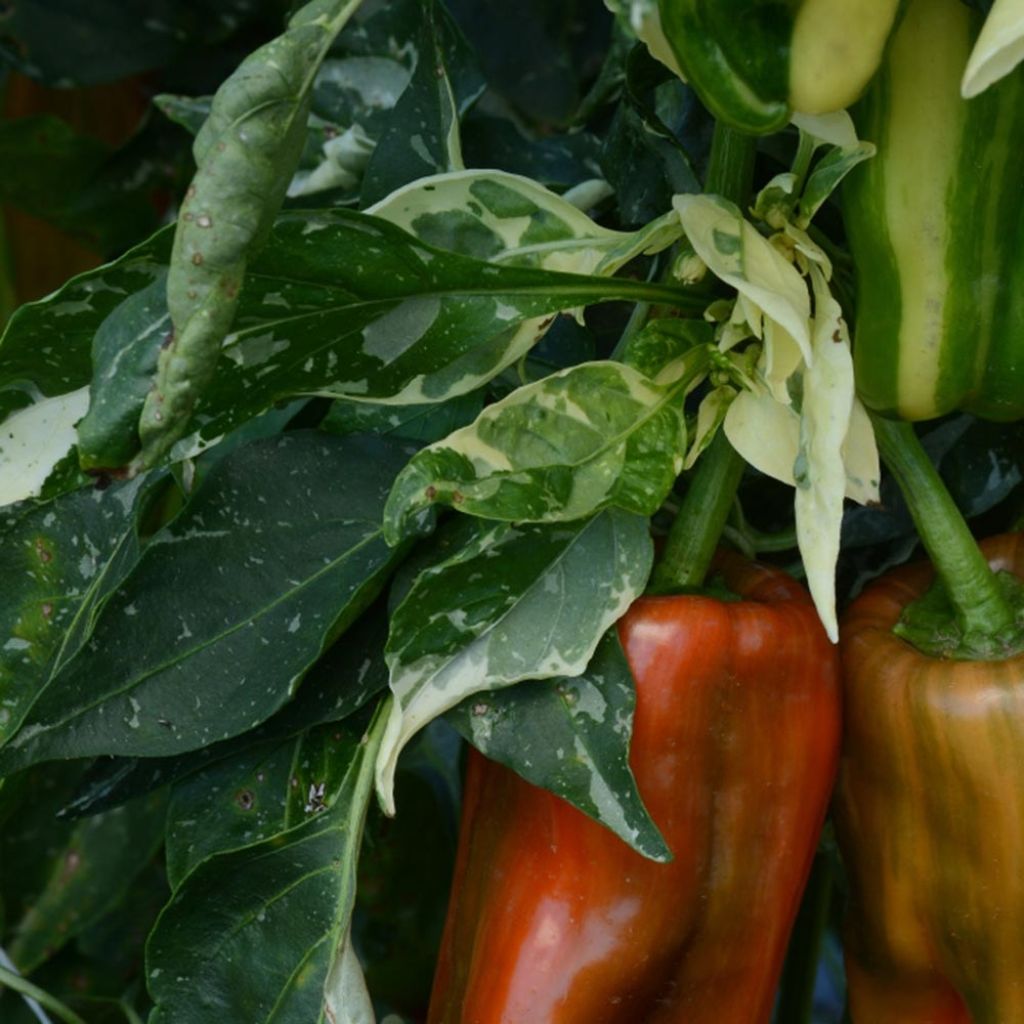

Graines de Poivron Candy Cane F1- Capsicum annuum
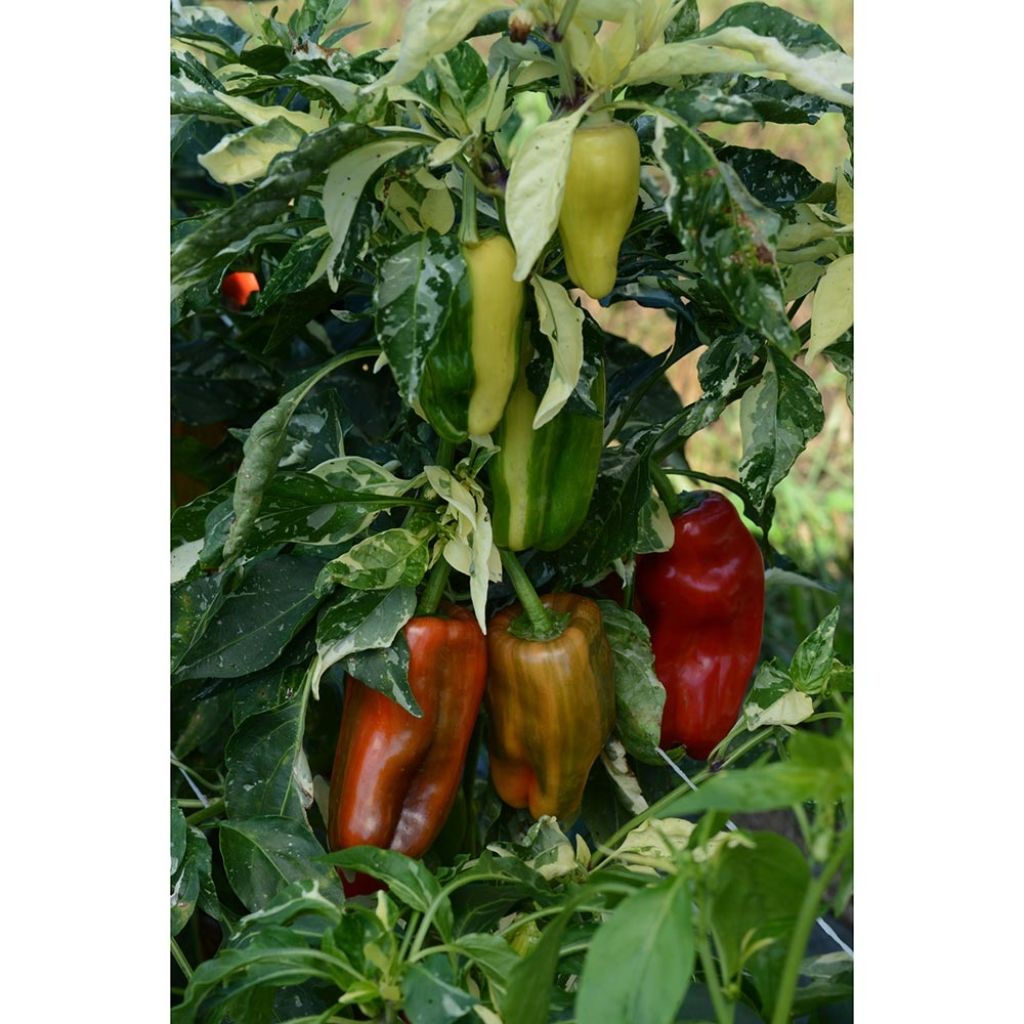

Graines de Poivron Candy Cane F1- Capsicum annuum
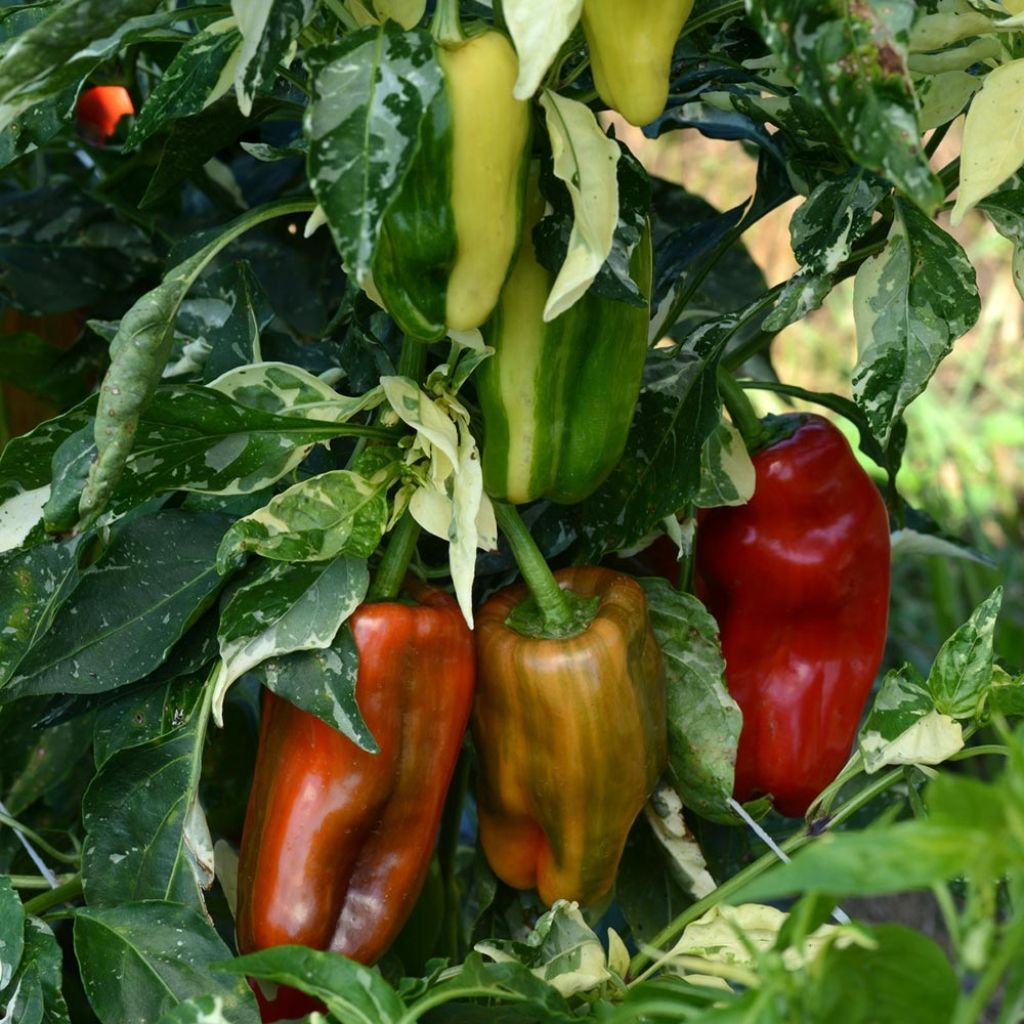

Graines de Poivron Candy Cane F1- Capsicum annuum
Capsicum annuum Candy Cane F1
Capsicum annuum Candy Cane F1
Bell pepper, Sweet pepper
The packet only contains 4 seeds, which means each seed costs £1. Very disappointed before sowing! Furthermore, the delivery time is 20 days: ordered on 9th April and received on 4th May.
Eric, 05/05/2020
Why not try an alternative variety in stock?
View all →This plant carries a 6 months recovery warranty
More information
We guarantee the quality of our plants for a full growing cycle, and will replace at our expense any plant that fails to recover under normal climatic and planting conditions.
Seed-only orders are dispatched by sealed envelope. The delivery charge for seed-only orders is €3.90.
Description
The Candy Cane F1 pepper is a recent hybrid variety, notable for the whimsical appearance of its green fruits striped with white, which turn red when ripe, as well as its decorative variegated foliage. The crunchy and sweet fruits, about 10 cm (4in) long, are delicious at all stages of ripeness. It is a plant that is grown as an annual, requiring heat and a very rich soil. This particularly decorative variety is perfect for growing in a pot on a balcony or patio. Versatile, peppers can be consumed raw in salads or cooked in dishes such as Basque chicken, ratatouille, or stuffed peppers.
The Candy Cane pepper is sown in a warm place from March to May and harvested from July to September-October.
Peppers and chilli peppers come from the same plant! They are the result of successive selections that have led to the sweet-tasting pepper and the spicy-tasting chilli pepper. The spiciness of chilli peppers is measured on the Scoville scale, ranging from 0 to 10 (0 corresponding to the pepper). They were introduced to Europe by Christopher Columbus and quickly spread around the world. Apart from a few varieties, peppers and chilli peppers are grown as annual plants in our climate.
They belong to the Solanaceae family and are divided into five major species: Capsicum annuum (the most common), Capsicum baccatum, Capsicum chinense, Capsicum frutescens, and Capsicum pubescens.
The fruits of this 'Candy Cane' variety start off green and will take on their final colour as they ripen: red, yellow, brown, orange, purple, etc. Their shape can vary: square, elongated, semi-long, etc.
Peppers and chilli peppers are rich in vitamins and antioxidants, including capsaicin, which is responsible for the more or less spicy flavor of these fruits.
In terms of cooking, peppers and chilli peppers are found in many cuisines around the world and can be prepared in multiple ways. Peppers can be consumed raw or cooked, stuffed, marinated, grilled, in salads, ratatouille, etc., while chilli peppers, fresh or dried, add heat and spice to dishes according to their spiciness.
These fruit vegetables are greedy plants, requiring a very rich soil and enjoying full sun exposure.
Harvesting: Harvesting takes place from August to October (or as early as July for certain varieties) by cutting the stem with pruning shears or a knife.
Storage: Peppers and chilli peppers can be stored in the refrigerator for several days. They can also be frozen or dried.
The gardener's tip: We recommend mulching the soil with thin successive layers of grass clippings, if possible mixed with dead leaves. This protection, which helps keep the soil moist, also limits weed growth. You can also opt for a mineral mulch (bricks, slate, etc.) which will help accumulate heat.
Report an error about the product description
Capsicum annuum Candy Cane F1 in pictures
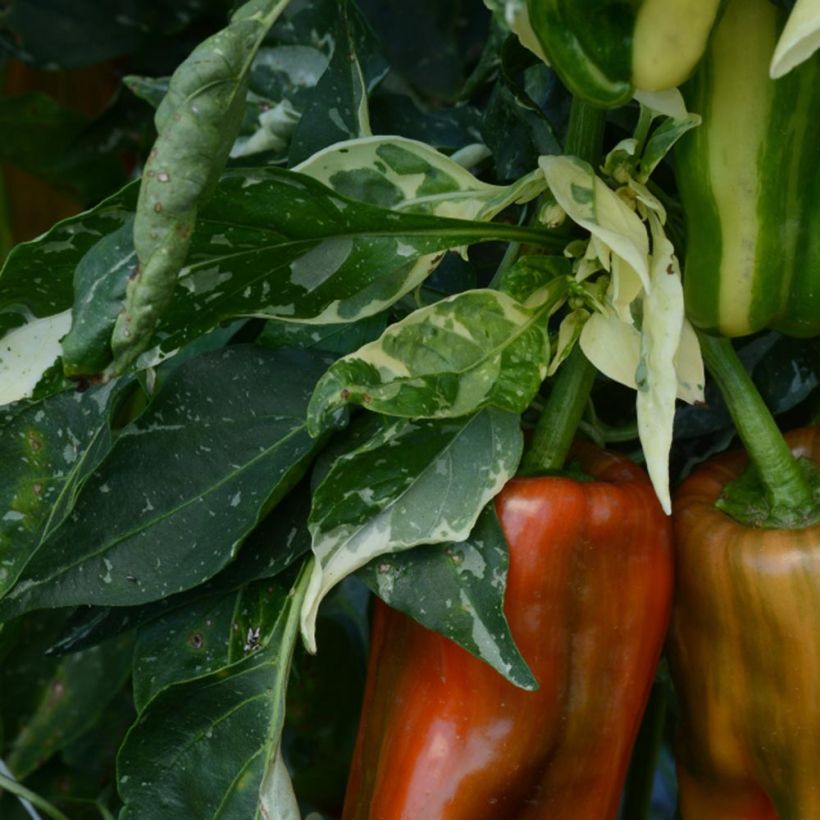

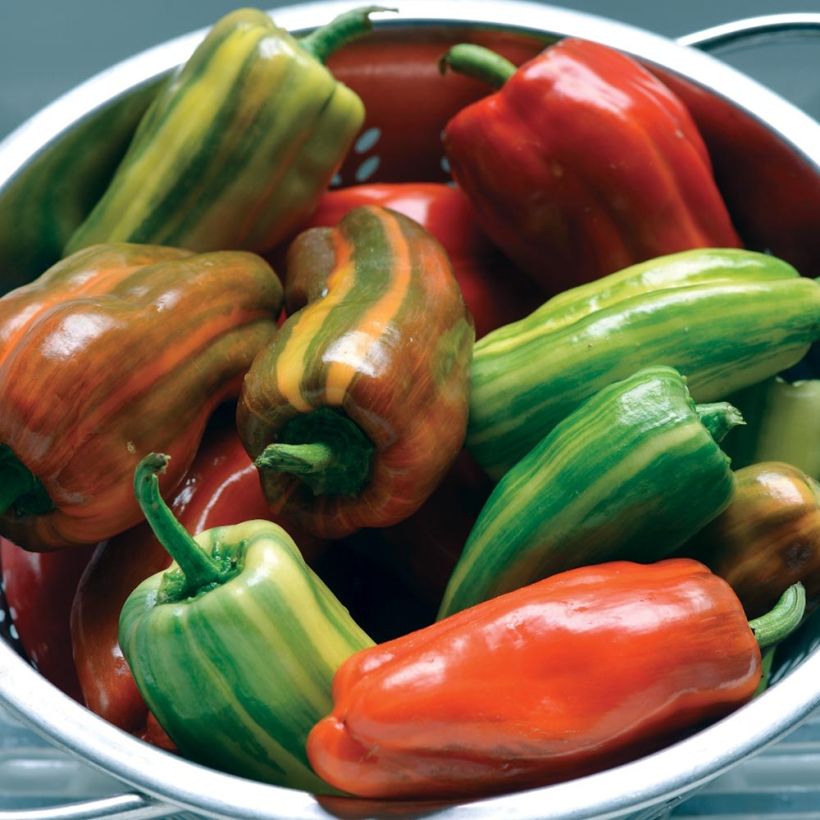

Harvest
Plant habit
Foliage
Botanical data
Capsicum
annuum
Candy Cane F1
Solanaceae
Bell pepper, Sweet pepper
Cultivar or hybrid
Annual
Other Pepper seeds
Planting and care
Peppers are easy to grow. Sunlight and heat are crucial for the success of this crop. They can tolerate any type of soil, although they prefer rich, loose, and well-draining soil. You can add some sand if the substrate is too compact.
Sowing under glass: From mid-February to May, sow indoors or in heated greenhouses in trays at around 20°C (68°F). Bury the seeds under 5 to 7 mm (0.3in) of seed compost as they need darkness to germinate. Do not use humus at this stage, as it may burn the future roots. The growth of pepper plants is rapid: the seeds germinate between 3 days and a week after sowing. This is an average. Do not discard a tray if germination has not occurred within this time frame, thinking they are irrecoverable. Some varieties take longer. When the plants have reached 5 to 6 true leaves, transplant them into buckets that will provide a little more space for their roots, and start acclimatising them to the outside on sunny days.
Transplanting in open ground: Once the risk of frost has passed, usually by mid-May, transplant your plants into the open ground. Choose the sunniest and warmest spots in the garden. At the base of a south-facing wall is an ideal position. Loosen the soil and dig a hole at least 3 to 4 times the volume of the plant's root system. Add a little well-decomposed compost at the bottom. Place your plant, which can be buried up to the first leaves, then fill in the hole. Tamp down, form a basin around the base, and water generously. Be careful not to water the leaves to protect your plants from fungal diseases. If you want to plant multiple plants, space them 60 cm (24in) apart in all directions.
Maintenance: Adding mulch at the base of your plants helps retain some moisture and reduces the need for weeding. Pepper plants do not require a lot of watering: their root system has a taproot that searches deeply for available resources. Only water generously in case of prolonged drought. If you have chosen to grow them in pots, you can keep your pepper plants for several years by storing them in a warm and well-lit place in winter. In pots, the plant cannot develop as efficient a taproot as in open ground. Therefore, it is necessary to water it regularly but moderately.
Seedlings
Care
Intended location
-
, onOrder confirmed
Reply from on Promesse de fleurs
Vegetable seeds
Haven't found what you were looking for?
Hardiness is the lowest winter temperature a plant can endure without suffering serious damage or even dying. However, hardiness is affected by location (a sheltered area, such as a patio), protection (winter cover) and soil type (hardiness is improved by well-drained soil).

Photo Sharing Terms & Conditions
In order to encourage gardeners to interact and share their experiences, Promesse de fleurs offers various media enabling content to be uploaded onto its Site - in particular via the ‘Photo sharing’ module.
The User agrees to refrain from:
- Posting any content that is illegal, prejudicial, insulting, racist, inciteful to hatred, revisionist, contrary to public decency, that infringes on privacy or on the privacy rights of third parties, in particular the publicity rights of persons and goods, intellectual property rights, or the right to privacy.
- Submitting content on behalf of a third party;
- Impersonate the identity of a third party and/or publish any personal information about a third party;
In general, the User undertakes to refrain from any unethical behaviour.
All Content (in particular text, comments, files, images, photos, videos, creative works, etc.), which may be subject to property or intellectual property rights, image or other private rights, shall remain the property of the User, subject to the limited rights granted by the terms of the licence granted by Promesse de fleurs as stated below. Users are at liberty to publish or not to publish such Content on the Site, notably via the ‘Photo Sharing’ facility, and accept that this Content shall be made public and freely accessible, notably on the Internet.
Users further acknowledge, undertake to have ,and guarantee that they hold all necessary rights and permissions to publish such material on the Site, in particular with regard to the legislation in force pertaining to any privacy, property, intellectual property, image, or contractual rights, or rights of any other nature. By publishing such Content on the Site, Users acknowledge accepting full liability as publishers of the Content within the meaning of the law, and grant Promesse de fleurs, free of charge, an inclusive, worldwide licence for the said Content for the entire duration of its publication, including all reproduction, representation, up/downloading, displaying, performing, transmission, and storage rights.
Users also grant permission for their name to be linked to the Content and accept that this link may not always be made available.
By engaging in posting material, Users consent to their Content becoming automatically accessible on the Internet, in particular on other sites and/or blogs and/or web pages of the Promesse de fleurs site, including in particular social pages and the Promesse de fleurs catalogue.
Users may secure the removal of entrusted content free of charge by issuing a simple request via our contact form.
The flowering period indicated on our website applies to countries and regions located in USDA zone 8 (France, the United Kingdom, Ireland, the Netherlands, etc.)
It will vary according to where you live:
- In zones 9 to 10 (Italy, Spain, Greece, etc.), flowering will occur about 2 to 4 weeks earlier.
- In zones 6 to 7 (Germany, Poland, Slovenia, and lower mountainous regions), flowering will be delayed by 2 to 3 weeks.
- In zone 5 (Central Europe, Scandinavia), blooming will be delayed by 3 to 5 weeks.
In temperate climates, pruning of spring-flowering shrubs (forsythia, spireas, etc.) should be done just after flowering.
Pruning of summer-flowering shrubs (Indian Lilac, Perovskia, etc.) can be done in winter or spring.
In cold regions as well as with frost-sensitive plants, avoid pruning too early when severe frosts may still occur.
The planting period indicated on our website applies to countries and regions located in USDA zone 8 (France, United Kingdom, Ireland, Netherlands).
It will vary according to where you live:
- In Mediterranean zones (Marseille, Madrid, Milan, etc.), autumn and winter are the best planting periods.
- In continental zones (Strasbourg, Munich, Vienna, etc.), delay planting by 2 to 3 weeks in spring and bring it forward by 2 to 4 weeks in autumn.
- In mountainous regions (the Alps, Pyrenees, Carpathians, etc.), it is best to plant in late spring (May-June) or late summer (August-September).
The harvesting period indicated on our website applies to countries and regions in USDA zone 8 (France, England, Ireland, the Netherlands).
In colder areas (Scandinavia, Poland, Austria...) fruit and vegetable harvests are likely to be delayed by 3-4 weeks.
In warmer areas (Italy, Spain, Greece, etc.), harvesting will probably take place earlier, depending on weather conditions.
The sowing periods indicated on our website apply to countries and regions within USDA Zone 8 (France, UK, Ireland, Netherlands).
In colder areas (Scandinavia, Poland, Austria...), delay any outdoor sowing by 3-4 weeks, or sow under glass.
In warmer climes (Italy, Spain, Greece, etc.), bring outdoor sowing forward by a few weeks.

































